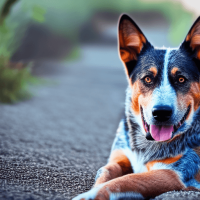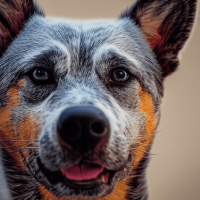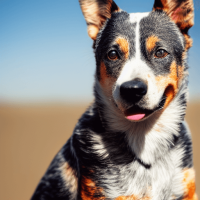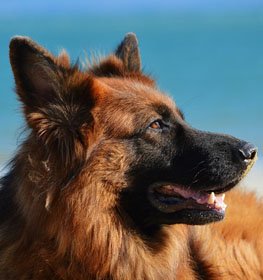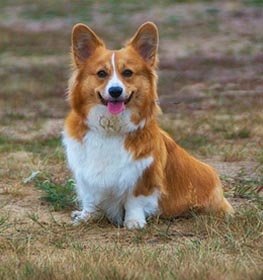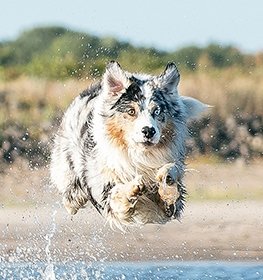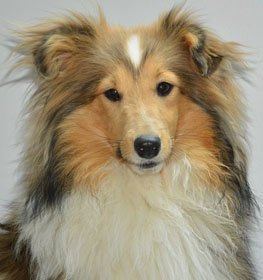Australian Cattle Dog Information & Dog Breed Facts
Collection of all the general dog breed info about Australian Cattle Dog so you can get to know the breed more.
| Group | Pastoral / Herding Dogs |
|---|---|
| Popularity Rank | 56 |
| Reviews | 4 |
| User Ratings | |
|
Compare the Australian Cattle Dog With Other Dogs
Select at least one dog breed to make the comparsion. | |
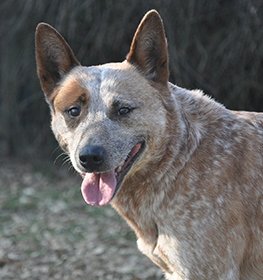 | |
| Origin | |
|
Common Names & Aliases
What other names is an Australian Cattle Dog known by? Discover all traditional, regional and informal names used for this breed. | Blue HeelerCattle DogRed HeelerQueensland Heeler |
|---|---|
|
Breed Classification
What type of dog breed is an Australian Cattle Dog? Learn about its genetic classification and breeding category. | Purebred |
Photo Gallery of the Australian Cattle Dog Breed
|
Size Classification
What size category is an Australian Cattle Dog? Learn how big the Australian Cattle Dog breed typically grows. | Medium |
|---|---|
|
Weight Statistics
How much does an Australian Cattle Dog weigh? Discover typical weight ranges for adult males and females of the Australian Cattle Dog breed. | 30-62 pounds (13-28 kg) |
|
Average Weight
What is the average weight of an Australian Cattle Dog? | 46 pounds (20.5 kg) |
|
Height
How tall is the Australian Cattle Dog? Australian Cattle Dog height: | Male: 17-20 inches (43-51 cm), Female: 17-19 inches (43-48 cm) |
|
Average Height
What is the average height of an Australian Cattle Dog? | Male: 18.5 inches (47 cm), Female: 18 inches (45.5 cm) |
|
Price Range
How much does an Australian Cattle Dog puppy cost? Find current market prices and factors affecting Australian Cattle Dog costs. | $500-$700 If you choose to purchase the Australian Cattle Dog, you should know that the mentioned amount of money is an average of the collected data from breeders’ sites and puppy finder places. If you have a Australian Cattle Dog for sale, please advertise it on a reliable website to make sure the Australian Cattle Dog gets to a happy place. |
|---|---|
|
Availability
How easy is it to get a Australian Cattle Dog? How many Australian Cattle Dog are there in the world? | Very frequent: The Australian Cattle Dog is quite easy to get. There is a risk of overbreeding, as it is an extremely popular breed. Inbreeding is common because of its popularity. A new study suggests that inbreeding contributes to the incidence of disease and health problems. So be careful, buy from a trustworthy place or kennel and seek the help of an experienced person, a professional, to make the right decision. |
|
Intelligence Rating
How intelligent is an Australian Cattle Dog? Discover the Australian Cattle Dog's intelligence ranking and learning capabilities. | Outstanding: Australian Cattle Dog is one of the brightest dog breeds. They desire to learn tricks and commands often. The limit is your creativity. They understand and memorize new commands in fewer than 5 repetitions. This breed obeys the first command 95% of the time or better.
The Australian Cattle Dog is one of the best breeds in the dog intelligence ranking. |
|---|---|
|
Training Difficulty
How easy is it to train an Australian Cattle Dog? Learn about the Australian Cattle Dog's trainability and response to training methods. | Australian Cattle Dog dogs are easy to train. They find out the association between commands and actions quite quickly. |
|
Watchdog Rating
How good is an Australian Cattle Dog as a watchdog? Learn about the Australian Cattle Dog's alertness and guarding instincts. | Australian Cattle Dog dogs are one of the best watchdogs. Their main job is to observe and they're very consistent in their effort. The best vocal cords and sense of hearing belong to them. Usually, they're very territorial and protective about their property, so the Australian Cattle Dog dogs will alert you if they sense something different. |
|
Territorial Protection
Is an Australian Cattle Dog protective of its territory? Learn about the Australian Cattle Dog's guarding instincts and behavior. | Australian Cattle Dog dogs are extremely protective guard dogs. This breed doesn't hesitate to protect its territory so the Australian Cattle Dog can be a good choice if you want an excellent guard dog. Keep calm and the Australian Cattle Dog will take care of unwanted people or animals. |
|
Personality Traits
What personality does an Australian Cattle Dog have? Learn about characteristic Australian Cattle Dog temperament and behavior traits. | EnergeticProtectiveAlertIntelligentResponsiveLoyalAggressive |
|---|---|
|
Sensitivity Level
How sensitive are they? Australian Cattle Dog sensitivity: | They are a little bit more sensitive than other dog breeds. Soft punishment affects them emotionally. Australian Cattle Dog dogs don't tolerate irregular daily routines, noisy households, and frequent guest visits really well.
They are receptive to their owner's emotions and make wonderful family companions. |
|
Affection Level
How affectionate are they? Is an Australian Cattle Dog a good family dog? | Average: Australian Cattle Dog dogs are average dogs regarding their affection level. Some breeds are forthcoming and friendly, while others are independent and don't bond too closely with their owners. |
|
Social Needs
How much social interaction does the Blue Heeler need? Australian Cattle Dog social needs: | Australian Cattle Dog dogs need for social interaction is average. This breed likes being around people or other animals, but they don't mind being left alone for a few hours either. |
|
Impulse to Wander or Roam
How likely is the Australian Cattle Dog to run away? Does this breed explore or wander a lot? Does Australian Cattle Dog roam? | The wanderlust potential of the Australian Cattle Dog is strong enough to escape from home. They have a strong desire for exploring the world. Safer to walk them on a leash unless you teach them how to get back to you on command. |
|
Prey Drive
Do this canine have a strong prey drive? Does Australian Cattle Dog have high prey drive? | Australian Cattle Dog dogs have a higher impulse to chase and catch something than other dog breeds. Cats or any other small animals might be in danger. It's a natural instinct, doesn't necessarily mean that Australian Cattle Dog dogs are aggressive. Better to keep this breed on a leash. |
|
Barking Frequency
Does an Australian Cattle Dog bark a lot? Learn about typical Australian Cattle Dog vocalization patterns and triggers. | Low to Average: The Australian Cattle Dog rarely barks. This breed could be a good choice if you're looking for a quiet breed. They don't bark unless there is a good reason.
Top reasons for barking: protection, alarm, fear, boredom, attention-seeking, greeting, separation anxiety, compulsive barking. |
|---|---|
|
Playful Nature
How playful is an Australian Cattle Dog? Understand the typical play drive and energy level of the Australian Cattle Dog breed. | The Australian Cattle Dog is a highly playful breed. Excited barking and sometimes nipping will alert you to play. |
|
Apartment Adaptability
Can an Australian Cattle Dog live in an apartment? Learn about the Australian Cattle Dog's suitability for apartment living. | Not an apartment-friendly dog the Australian Cattle Dog breed. If you don't have a garden, think carefully about your decision, keeping Australian Cattle Dog indoors can cause a lot of problems. |
|
Lifestyle Adaptability
How adaptable is an Australian Cattle Dog to lifestyle changes? Learn about the Australian Cattle Dog's flexibility to new situations. | Average: Australian Cattle Dog dogs adapt to lifestyle changes and different living environments quite okay usually. |
|---|---|
|
Alone Time Tolerance
Can an Australian Cattle Dog be left alone? Learn about the Australian Cattle Dog's tolerance to solitude. | Just like every puppy, they are prone to panic, cry, bark, whine when they left alone by their owner. With proper socialization and quality time with the dog can solve this problem. |
|
Bite Risk Assessment
What is an Australian Cattle Dog biting potential? Learn about the Australian Cattle Dog's bite risk factors. | Low 🔽 The Australian Cattle Dog has a low chance of biting somebody. Top reasons for dog bite: protection, pain, excitement, herding instinct, being provoked. (Data based on the available online bite statistics.) |
|---|---|
|
Mouthing Tendency
Is an Australian Cattle Dog mouthy? Learn about the Australian Cattle Dog's tendency to use mouth during play. | Australian Cattle Dog dogs have a strong tendency to nip, chew, play-bite, or herd people. It's a common habit during puppyhood, not aggressive behavior. These "bites" don't hurt, but Australian Cattle Dog dogs need to be taught a good attitude.
We have compiled a list of Mouthy Dog Breeds. |
|
Bite Strength Rating
How strong is an Australian Cattle Dog bite? Learn about the Australian Cattle Dog's bite force measured in PSI. | Between 200 and 400 PSI ⏺ Australian Cattle Dog bite force: Ordinary. Bite force Australian Cattle Dog measurements typically fall within the range of 200 to 400 PSI. The bite force of an Australian Cattle Dog is considered ordinary when compared to other dog breeds, but it is still quite powerful. This Australian Cattle Dog bite force PSI can cause bite wounds. Australian Cattle Dog bite PSI is not something that should be feared if the dog is well-trained and managed. To avoid any issues, it's essential to learn how to train an Australian Cattle Dog puppy not to bite from an early age.
The Australian Cattle Dog, and many others, have a fearsome presence because they have significant jaw strength, so it is important not to anger the dog and have it around strangers until it is fully trained. However, they are usually quite calm and good companions, they work well in families and are easy to care for. In conclusion, while the Australian Cattle Dog bite force is certainly an interesting aspect of the breed, it is important not to let it overshadow the many other reasons why these dogs are so loved and respected. With proper training and socialization, an Australian Cattle Dog can be a loyal and protective companion for your family. |
|
Average Lifespan
How long does an Australian Cattle Dog live? Learn about the typical lifespan of the Australian Cattle Dog breed. | 11-15 years The average lifespan of Australian Cattle Dog: 13 years |
|---|---|
|
Climate Tolerance
How well does an Australian Cattle Dog handle different weather? Learn about the Australian Cattle Dog's climate adaptability. | Prefers average to cold weather conditions The Australian Cattle Dog can adapt to well to cold weather conditions, some dogs even can be a good mountain dog. |
|
Health Concerns
What health issues are common in an Australian Cattle Dog? Discover typical conditions affecting the Australian Cattle Dog breed. | The Australian Cattle Dog is a healthy breed, but there are certain health issues that you should check with your vet regularly. |
|
Vet Care Frequency
How often does an Australian Cattle Dog need vet visits? Learn about the Australian Cattle Dog's veterinary care requirements. | Average The Australian Cattle Dog should have a complete physical check-up at least once per year. If your dog shows any symptoms, call your veterinarian. |
|
Health Problems
What genetic/health problems does the Australian Cattle Dog breed have? What are the health issues and concerns of the Australian Cattle Dog breed? Most common health risks of Australian Cattle Dog: | Hip Dysplasia Progressive retinal atrophy (PRA)Deafness |
|
Energy Rating
How energetic is an Australian Cattle Dog? Understand daily activity needs of the Australian Cattle Dog breed. | Australian Cattle Dog dogs are high-energy dogs. An active lifestyle makes them happy. |
|---|---|
|
Activity Requirement / Exercise Need
How much exercise does an Australian Cattle Dog need? How much exercise do Australian Cattle Dog dogs require per day?
Do Australian Cattle Dog dogs need a lot of exercises? | Australian Cattle Dog dogs need a lot of exercises. Long walks should be on a daily schedule. If you live an active life, this breed can be a good choice for you. |
|
Sleeping Need
How much sleep does the Australian Cattle Dog breed need? | Australian Cattle Dog dogs don't need too much sleep. They are energetic and desire to live active life. If you think naps are overrated, this breed can be the best choice for you. |
|
Obesity Tendency
Is an Australian Cattle Dog prone to weight gain? Learn about the Australian Cattle Dog's obesity risks. | Average to High: If you don't pay attention to the Australian Cattle Dog's weight, he can easily gain weight. More than one daily walk should be on schedule. To make your dog happy and fit, feed him with quality dry dog food and live an active life together. Try to find the happy medium between exercise and feeding.
If you notice any weight gain, consult your veterinarian and make a diet plan. Reduce unhealthy food and snacks, and measure the Australian Cattle Dog weight regularly. |
|---|---|
|
Food Consumption
How much food does an Australian Cattle Dog need daily? Learn about the Australian Cattle Dog's feeding requirements. | 1.5 to 2.5 cups of high-quality dry food a day, divided into two meals. |
|
Allergy Friendliness
Is an Australian Cattle Dog hypoallergenic? Learn about the Australian Cattle Dog's suitability for allergy sufferers. | No Australian Cattle Dog dogs don't do well with allergy sufferers by causing allergic reactions. Some dog breeds are even considered to higher possibility of an allergic response. Coat type isn't necessarily relevant, because most people are allergic to dander (flakes on the dog's skin) or saliva, not actually to dog hair. |
|---|---|
|
Coat Colors
What colors does an Australian Cattle Dog come in? Discover all possible Australian Cattle Dog color variations. | Red Blue SpeckledMottled |
|
Grooming Requirements
How much grooming does an Australian Cattle Dog need? Learn about Australian Cattle Dog coat maintenance requirements. | Effortless: The Australian Cattle Dog requires minimal grooming. Seasonal flea treatment is needed, but cutting the dog's hair by a professional groomer isn't necessary. Ears and eyes should be cleaned sometimes to avoid infections. Australian Cattle Dog is one of the best choices if you don't have the time, skill, or money to take care of a high-maintenance dog. Highly recommended for beginners. |
|
Drooling Tendency
Does an Australian Cattle Dog drool a lot? Learn about the Australian Cattle Dog's drooling habits. | The Australian Cattle Dog is a perfect example of a very low drooling tendency. If you're disgusted by slobber spots on your clothes, the Australian Cattle Dog could be a perfect choice for you. Drooling is the unintentional saliva flowing outside of the mouth. It can be completely normal or a sign of a health problem. Certain dog breeds drool minimum compared to others, just like the Australian Cattle Dog.
If you notice any change in your dog's drooling habit, you should contact a vet as soon as possible. |
|
Stinkiness Rating
Does an Australian Cattle Dog smell bad? Learn about the Australian Cattle Dog's natural odor levels. | Medium ⏺ The Australian Cattle Dog has an average chance of bad smell. Top reasons for dog stinkiness: infection of bad tooth/ear/skin folds, gas attacks. |
|
Coat Characteristics
What type of coat does an Australian Cattle Dog have? Learn about the Australian Cattle Dog's fur characteristics. | Dense |
|
Bathing Needs
How often does an Australian Cattle Dog need baths? Learn about the Australian Cattle Dog's bathing requirements. | 4-6 weeks Average. Experts recommended at least every 4-6 weeks for this family pup. According to a study, 56% of pet parents don’t bathe their dogs as frequently as they should, and 60% use the sniff test when deciding when it’s bath time.
Bathing your dog is beneficial to them in more ways than just one. It’s also a good time to look for unusual scratches, bumps, fleas, and other irregularities. When their hair is wet and flat against their body, these details are more visible. |
|
Shedding Level
How much do Australian Cattle Dog dogs shed? How to control, reduce and prevent the shedding of the Blue Heeler? Do Australian Cattle Dog dogs shed a lot? | Australian Cattle Dog dogs shed moderately. It's a natural process of the hair growth cycle. Regular brushing reduces the amount of hair that sheds. It mostly depends on their health status and breed type. |
|
Child Compatibility
Is an Australian Cattle Dog good with children? Learn about the Australian Cattle Dog's behavior around kids of different ages. | Australian Cattle Dog dogs are very kid-friendly dogs. This breed enjoys being surrounded by children.
|
|---|---|
|
Pet Compatibility
How well does an Australian Cattle Dog get along with other pets? Discover the Australian Cattle Dog's compatibility with other animals. | Australian Cattle Dog dogs are generally with other pets. |
|
Stranger Friendly
Are they aggressive or friendly towards/with strangers? Australian Cattle Dog temperament with other people: | Australian Cattle Dog dogs are not the most stranger-friendly dogs. |
|
Cat Friendly
How well do Australian Cattle Dog dogs get along with cats? Are they good with kittens? What is this fido's temperament with cats? Can they be good with cats? Can the Australian Cattle Dog breed live with a cat? | Australian Cattle Dog dogs are average friendly towards cats. |
|
Dog Friendly
Is Australian Cattle Dog good with other dogs? Are they dog-friendly dogs? How well do Australian Cattle Dog dogs get along with other dogs? | Australian Cattle Dog dogs are average friendly towards other dogs. |
|
Good For First Time Owners
Is Australian Cattle Dog breed good for first-time owners? Do they make a good dog for novice owners? Is Australian Cattle Dog breed suitable for first-time owners? | Yes Australian Cattle Dog dogs are good for novice owners, due to their easy-going personality. |
|
Office Friendly
Are Australian Cattle Dog dogs good office canines? Do Australian Cattle Dog dogs make good office-friendly pets? Can they be office dogs? | No Australian Cattle Dog is not the best dog breed for office environment. |
|
Senior Citizens Friendly
Are they senior citizens friendly dogs? How well do Australian Cattle Dog dogs get along with the elderly people? What is the Blue Heeler temperament with senior people? Are Australian Cattle Dog dogs good for elderly owners? | Australian Cattle Dogs are one of the best breeds for elderly people. |
|
Service Dog Capability
Can an Australian Cattle Dog be a service dog? Learn about the Australian Cattle Dog's service work potential. | Not really This breed generally not used as a service dog. A service dog is a term used in the USA to refer to any type of assistance dog specifically trained to help people who have disabilities, such as visual impairment, hearing impairments, mental disorders, seizures, mobility impairment, and diabetes. Service dogs are protected under the ADA (Americans with Disabilities Act).
Australian Cattle Dog is not the best breed for service purposes. |
|---|---|
|
Therapy Work Suitability
Is an Australian Cattle Dog good as a therapy dog? Learn about the Australian Cattle Dog's therapy work aptitude. | Not really This breed is generally not used as a therapy dog. A therapy dog is a dog that might be trained to provide affection, comfort, and love to people in hospitals, retirement homes, nursing homes, schools, hospices, disaster areas, and people with anxiety disorders or autism.
Australian Cattle Dog is not the best breed for therapeutic purposes. |
|
Scent Detection Ability
Is an Australian Cattle Dog good at detection work? Learn about the Australian Cattle Dog's scenting abilities. | Not really They are not typically employed for this type of work, but there may be exceptional cases. A detection dog or sniffer dog is a dog that is trained to use its senses (mostly its smell) to detect substances such as explosives, illegal drugs, wildlife scat, currency, blood, and contraband electronics such as illicit mobile phones.
Australian Cattle Dog is not the best breed for detection purposes. |
|
Search & Rescue Potential
Can an Australian Cattle Dog do search and rescue? Learn about the Australian Cattle Dog's SAR capabilities. | Not really This dog breed is not typically used as a search and rescue dog. The use of dogs in search and rescue (SAR) is a valuable component in wilderness tracking, natural disasters, mass casualty events, and locating missing people.
The Australian Cattle Dog is not the best breed for SAR purposes. |
|
Maritime Work Ability
Is an Australian Cattle Dog good on boats? Learn about the Australian Cattle Dog's maritime capabilities. | Not really Australian Cattle Dog breed usually doesn't like being on a boat. Boat dogs were typically bred for their strength, stamina, and water resistance, as they were often required to perform tasks such as pulling in fishing nets, and jumping into the water to retrieve ropes or lines, or helping to move cargo. Sailor dog is a type of dog that was bred to accompany sailors on their voyages. They were typically used for three purposes: as a working dog, a watchdog, and as a companion. A boat dog is a term used to describe a type of dog that was traditionally bred and used as a working dog on boats. |
|
Draft Work Capability
Can an Australian Cattle Dog pull carts? Learn about the Australian Cattle Dog's drafting abilities. | Not really A drafting dog or draft dog is a dog bred and used for cart pulling. Dogs bred for this work have strong builds and qualities that are needed, strength and determination.
Australian Cattle Dog is not the best breed for drafting purposes. |
|
Military Service Background
Was an Australian Cattle Dog used in military service? Learn about the Australian Cattle Dog's military history. | Not really In history, this breed was not really used for combat dog. |
|
Puppy Litter Size
How many puppies does an Australian Cattle Dog usually have? Learn about typical litter sizes. | 1-7 puppies, average 5 |
|---|---|
|
Pregnancy Duration
How long is an Australian Cattle Dog pregnant? Learn about the Australian Cattle Dog's gestation period. | 60-64 days Reproductive cycle of the female Australian Cattle Dog: The first period called Proestrus lasts for about 9 days.
During this time the females start to attract males. You can notice by swelling vulva and bloody discharge. The second part is the Estrus when the female is receptive for the male. It lasts for about 3 to 11 days. The sign of the proestrus part is the soft and enlarged vulva. The discharge decreases and lightens in color. The third part is the Diestrus. Normally, it occurs around day 14. In this period the female’s discharge changes for vivid red and coming to its end. The vulva returns to average, and she will no longer permit mating. The fourth part called the Anestrus. The time frame between heat periods normally lasts about six months. |
|
Breeding Frequency
How often can an Australian Cattle Dog have puppies? Learn about safe breeding intervals. | Once a year. More frequent breeding is not healthy. It is very important not to buy a dog from a puppy mill, where the needs of the pups and their mothers are ignored. It's an inhumane high-volume dog breeding facility, where puppies born several times a year. |
|
AKC Classification
What AKC group is an Australian Cattle Dog in? Learn about the Australian Cattle Dog's AKC classification. | Recognized by the American Kennel Club in 1980 as a Herding breed. |
|---|---|
|
FCI Classification
What FCI group is an Australian Cattle Dog in? Learn about the Australian Cattle Dog's international classification. | Recognized by FCI in the Sheepdogs and Cattledogs (except Swiss Cattledogs) group, in the Cattledogs (except Swiss Cattledogs) section. |
|
Kennel Club Recognition
Which kennel clubs recognize an Australian Cattle Dog? Learn about the Australian Cattle Dog's official recognition. | American Canine RegistryAmerican Kennel ClubAmerica's Pet RegistryCanadian Kennel ClubDog Registry of America Inc.Federation Cynologique InternationaleKennel Club of Great BritainNorth American Purebred Registry, Inc.American Canine Association, Inc.Australian National Kennel CouncilContinental Kennel ClubNational Kennel ClubNew Zealand Kennel ClubUnited Kennel Club |
Australian Cattle Dog Pros and Cons
- Intelligence Rating: Outstanding: Australian Cattle Dog is one of the brightest dog breeds.
- Training Difficulty: Australian Cattle Dog dogs are easy to train.
- Grooming Requirements: Effortless: The Australian Cattle Dog requires minimal grooming.
- Drooling Tendency: The Australian Cattle Dog is a perfect example of a very low drooling tendency.
- Watchdog Rating: Australian Cattle Dog dogs are one of the best watchdogs.
- Child Compatibility: Australian Cattle Dog dogs are very kid-friendly dogs.
- Senior Citizens Friendly: Australian Cattle Dogs are one of the best breeds for elderly people.
- Good For First Time Owners: Australian Cattle Dog dogs are good for novice owners, due to their easy-going personality.
- Allergy Friendliness: Australian Cattle Dog dogs don't do well with allergy sufferers by causing allergic reactions.
- Apartment Adaptability: Not an apartment-friendly dog the Australian Cattle Dog breed.
- Obesity Tendency: Average to High: If you don't pay attention to the Australian Cattle Dog's weight, he can easily gain weight.
- Mouthing Tendency: Australian Cattle Dog dogs have a strong tendency to nip, chew, play-bite, or herd people.
- Impulse to Wander or Roam: The wanderlust potential of the Australian Cattle Dog is strong enough to escape from home.
- Office Friendly: Australian Cattle Dog is not the best dog breed for office environment.
Australian Cattle Dog History
The Australian Cattle Dog, as its name suggests, is indigenous to Australia. In the early 19th century, when the Anglo-Australian settlers started to migrate from the initial coastal settlements to the vast grasslands of the western inland. This was considered to be the prime territory for raising beef cattle. During the process of creating the large cattle on huge ranches, eventually, farmers needed good, reliable herding dogs, to help them out.
The first cattle dogs in Australia were British imports like the Old English Sheepdog and the Smithfield. The Smithfield was unsuited to the rough terrain, the high temperature, and to the vast distances between the market and the ranches. Records from these early pioneers document the loss of many cattle in transit to the market due to the lack of control by their herding dogs. These distances were usually hundreds of miles long over rough terrain, which was too demanding for the Old World breeds. Thus, a long process of trial and error type of breeding begun, with the intention of breeding a herding breed, that could meet the requirements the Australian terrain posed. So, the Smithfield were crossed with the Dingoes and with Scottish Highland Collied as breeders worked their way to the hardworking and durable herding breed, they sought after. In the mid-19th century, some ranchers experimented by cross-breeding the native Dingo with the blue-merle drover’s dog.
Surprisingly, the result was an intelligent, and very capable dog, who was naturally tenacious enough to deal with the beef cattle. These dogs became known as the Blue Heelers. They were especially popular in Queensland, where the dogs were called Queensland Heelers. A man named Robert Kaleske, in 1883 took up the breeding of Blue Heelers and started to present them at local and national dog shows. He also drew up a breed standard, which was accepted, basing the breed on the Dingo, believing that the Dingo was its ancestor. In 1903, the Kennel Club of New South Wales approved the standard. The key contributor breeder was George Elliot, from Queensland, who bred Dingoes with Collies and sold the puppies to ranchers, spreading the word. Later, towards the middle of the 20th century, two brothers, named Harry and Jack Bagust, in the United States perfected the breed. They were crossing the Australian Cattle Dog made by Mr. Elliot with Dalmatians, with the Kelpie, and some with the German Shepherd. Thanks to the Dalmatian’s natural protectiveness, loyalty, and ease with horses, mixed with the initial breed’s working capabilities was the right combination in order to produce the final Australian Cattle Dog, we know today.
Despite the breed’s long history, because of the constant breeding processes, it was not until 1980 that the AKC (American Kennel Club) recognized the Australian Cattle Dog. The UKC (United Kennel Club) followed in 1985 with the registration. In the early days of the Australian economy, the Australian Cattle Dog made indispensable contributions to the growth of the continent’s beef industry. Today, the breed is still employed on ranches all around the world. However, many enjoy them simply as family companions, including the Hollywood stars like Owen Wilson, Steve Earle, and Matthew McConaughey.
Latest Australian Cattle Dog Compares
Australian Cattle Dog Names
How old is my Australian Cattle Dog in human years?
You May Also Like
Rate The Australian Cattle Dog Breed
Australian Cattle Dog Comments, Reviews and Questions
- isabel
Feb 22, 2021, 4:25:04 PM:
- Beckett
Jul 21, 2020, 9:56:26 PM:
I loved Kylie (Blue Heeler/Austrailian Shepherd mix), but she was TERRIBLE with strangers and other dogs. Be aware that this breed could have issues with meeting other dogs on walks.
- Mark McGinnis
Jul 6, 2020, 1:19:52 PM:
Bought this "mutt" at a junkyard for 50 dollars. Find out later my "mutt" is a Australian Cattle dog. Almost 17 and still going strong besides a little arthritis.


